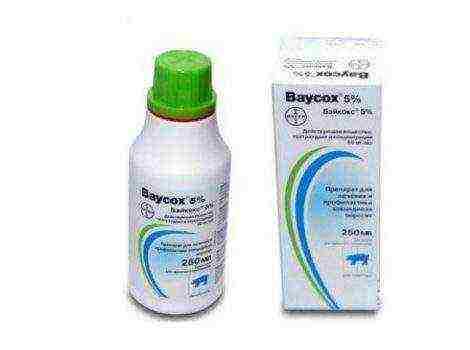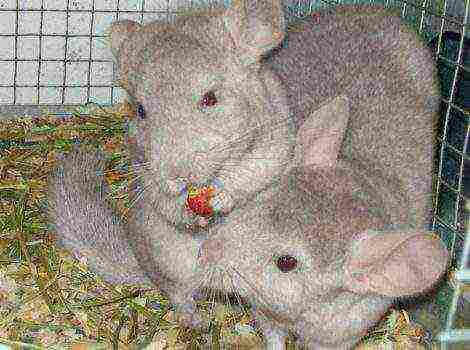Content
Care and maintenance of decorative rabbits at home
Any rabbit that is kept as a member of the family can be considered decorative, regardless of breed and size. However, most often, "decorative" means dwarf animals, bred specifically to become pets. It is a mistake to think that keeping a rabbit at home is much easier than a cat or dog. Eared pets require care and affection, and an attentive owner needs to arm himself in advance with the knowledge of caring for a new friend. In this article, you will learn about the conditions for keeping a pet.
How to choose the right breed of decorative rabbit?
The breeds of decorative rabbits are classified:
- by mass bodies (large, medium and small)
- by the length of the coat (long-haired, normal-haired and short-haired).
The animals differ not only in appearance, but also in character. Some breeds are quite capricious and can cause a lot of trouble for a novice owner. Consider the most popular breeds of dwarf rabbits.
Angora pygmy rabbit - long-haired. In appearance, the animals of this breed resemble a lump of fluff, from which the ears barely peep out. Even the muzzle is covered with long hair (up to 20 mm). These rabbits require constant labor-intensive care: the wool needs to be brushed every 3-4 days, and during the molting period - every day, otherwise the matted lumps will have to be cut off. Angora rabbits are medium-sized, up to 1600 This breed is recommended for those who already have experience in keeping rabbits.
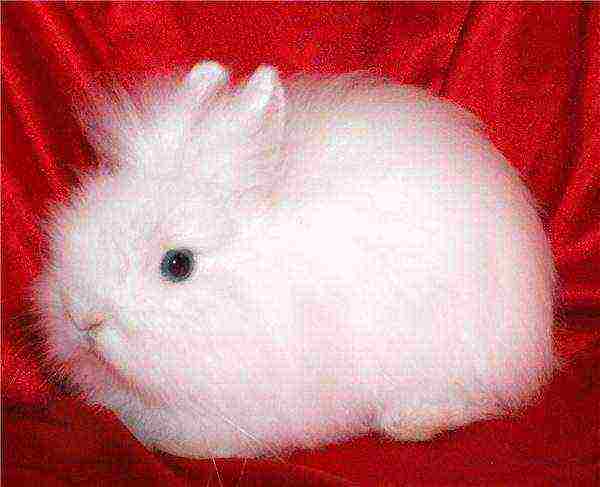
Lionhead rabbit originally from Belgium. Representatives of this breed are owners of a luxurious mane that adorns the neck, while the hair on the body is short. On lion-headed rabbits, it is worth choosing those who want to have a long-haired animal, but are not ready to spend a lot of time caring for their fur. The weight of adult animals is 1000-1600 g, the colors are varied. Lion-headed rabbits have a calm character, love affection, get along with children.
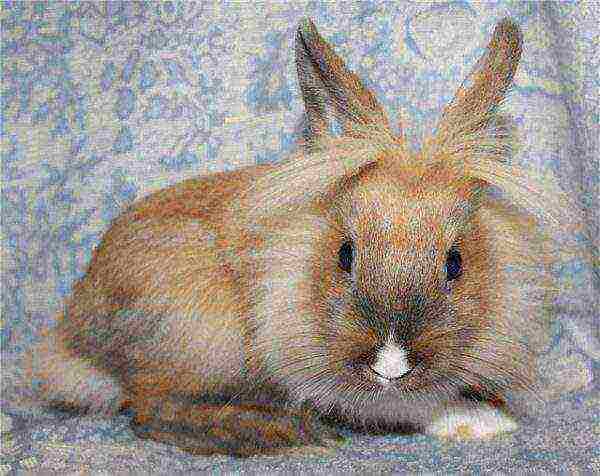
Fox dwarf rabbit, in contrast to the lion's head, is almost completely covered with thick and long (up to 7 mm) hair, only the muzzle is smooth. Average weight 1200 g, the most common colors are red or brown, but there are many. Forelegs disproportionately short. Rabbits of this breed are both aggressive and phlegmatic. Fox rabbits should not be chosen as pets for children; they require careful care.
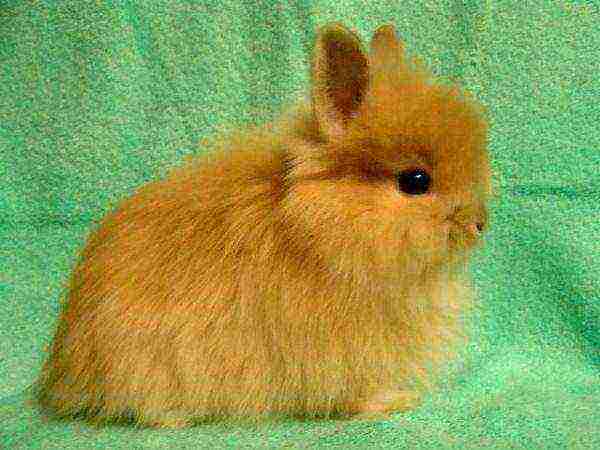
Hermelin - completely white, normal-haired. These rabbits have small ears, a short neck - features that give them the appearance of a charming toy. The animals are small, weighing less than 1500 g, but usually less than a kilogram. Hermelines do not tolerate heat well, this must be taken into account when choosing a place for a cage or aviary. Otherwise, they are unpretentious, but very wayward, it will not be easy for novice rabbit breeders with such pets.
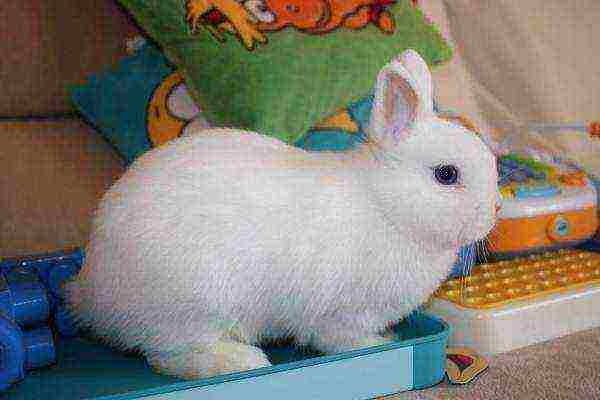
Rex (royal dwarf) - short-haired, very soft to the touch, "plush" fur, like a chinchilla. The variety of colors is impressive: the animals can be of any color, both monochromatic and with spots. Representatives of this breed are more susceptible to skin diseases than others, since they have a reduced protective function of the skin. Weight up to 1500 g, a characteristic feature - the mustache is almost not developed.Most individuals have a balanced, even phlegmatic character.
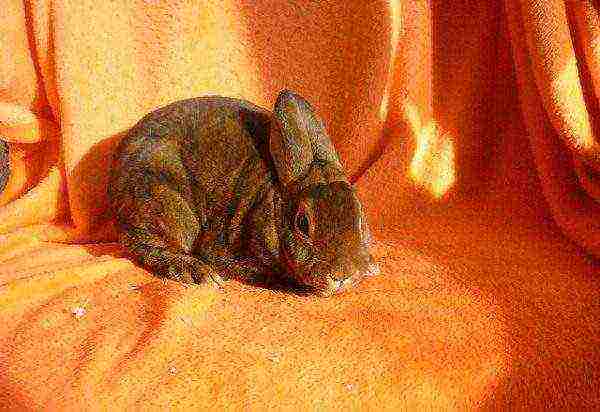
Colored dwarf rabbit Is one of the most popular breeds in Russia. Normal-haired, average weight - 1000 g. Unpretentiousness, variety of colors (there are up to 60 variations), playful and active disposition - those qualities thanks to which beginners or families with children can choose this breed. Sometimes during puberty, males are aggressive, but by the age of 1-1.5 years, most of the animals become affectionate and friendly again.
Dwarf ram - lop-eared rabbit. The length of the ears is measured in the same way as the wingspan of a bird: from the tip of one ear to the tip of the other in a horizontal position, it is 21-28 cm. Lop-eared rams are larger than other decorative breeds, their weight reaches 3000 g. They are distinguished by a very docile and affectionate character, unpretentious ... Ideal pets for children.
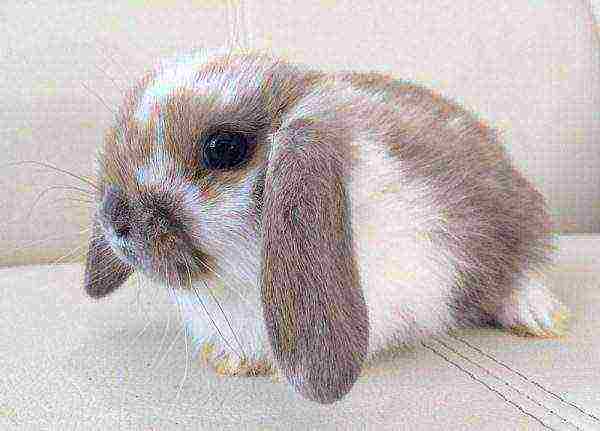
Dutch dwarf rabbit - the owner of an unusual color: the back half of the body and the head are of the same color as the eyes, the rest of the coat is white. Normal-haired, weighing up to 2200 g. Playful and affectionate, they know how to get along with other pets.

Those who want to acquire an eared pet with an unusual color should take a closer look at such breeds as moth, pygmy hare and dwarf butterfly.
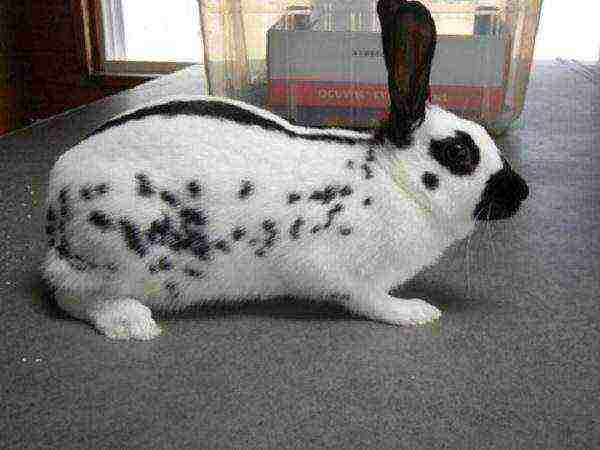
The breeds of dwarf rabbits are very diverse., among them everyone will be able to choose an animal to their liking. Specialists rabbit breeders from nurseries or consultants in pet stores will answer questions about the maintenance and care and advise on which breed to choose for those who first decided to have a decorative rabbit.
Features of keeping a dwarf rabbit at home
So, a new pet will soon appear in the house. What is the first thing to take care of? Decorative rabbits are kept at room temperature, in a dry room without drafts.... At the same time, it should be possible to ventilate the room: fresh air has a beneficial effect on the well-being of the animal and prevents the appearance of an unpleasant odor. Dirt, dust, direct sunlight will inevitably harm the rabbit's health.
Rabbit can live in a cage or aviary, but in order for the animal to run and play as much as possible, it needs to be released daily for a walk around the apartment.
To make your pet feel safe, a house is needed - analogue of a burrow, where you can climb entirely. It is undesirable to get the rabbit out of the shelter: the animal must know that there is a place where you can hide or rest, and where no one will touch it.
How to choose a pet cage?
- Minimum cage size- 70x40 cm. It should be spacious enough so that the rabbit can move freely on it. The optimal height is the growth of a rabbit standing on its hind legs, length - three jumps, width - two.
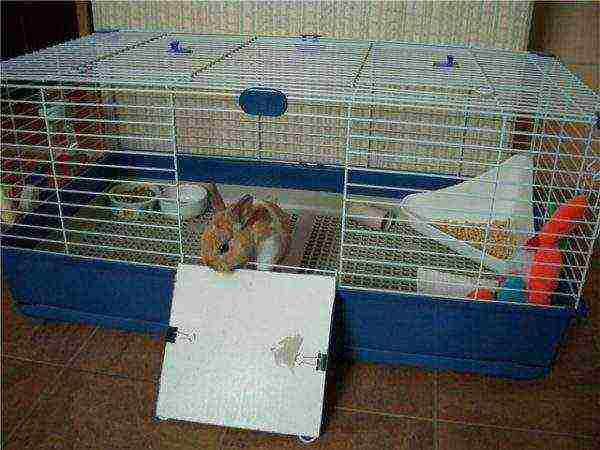
- For apartment cells with monolithic walls are poorly suited: they are bulky and difficult to move. Are comfortable cages with rods made of wood and metal... Wood is a safe and beautiful material, the only drawback is that the rabbit will definitely chew on the cage and it will quickly lose its aesthetic appearance. The animal will be comfortable in a metal mesh cage. If it is equipped with a plastic tray, cleaning will be a matter of minutes.
- Open top of the cage will allow the pet to feel more free, but in this case, the height of the walls should be such that the rabbit cannot jump over them.
- Cage bottom regardless of the material, they are covered with bedding.From sitting on a hard surface, rabbits develop pododermatitis - painful wounds on the paws.
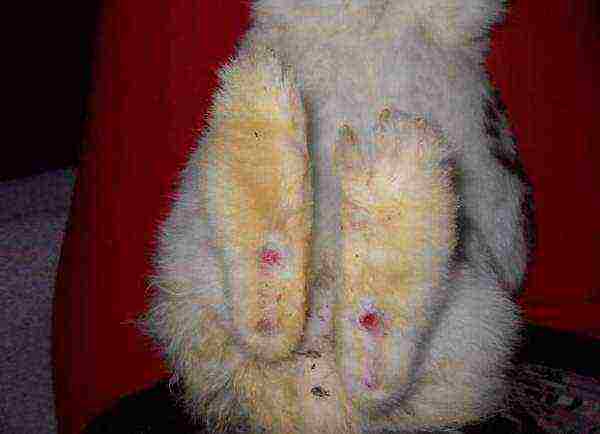
- A toilet tray is installed in the corner.... Rabbits get used to going to the toilet in the same place as well as cats, although it will take more time to train. The presence of the tray makes it easy to clean the cage.
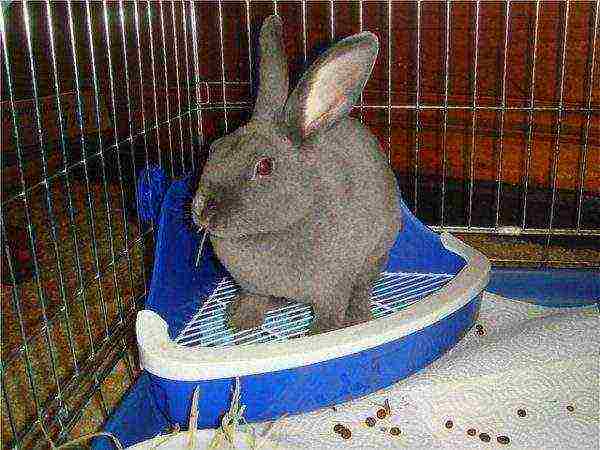
- A drinker is fixed on the wall of the cage. (a nipple drinker for rodents is suitable). The food bowls are either fixed to the wall or placed on the floor. For rabbits, choose a ceramic or metal flat bottom feeder., heavy enough so that the animal does not turn them over.
- The cage is placed in a quiet and bright place., away from direct sunlight. There may be a small corner of the cage in the sun, then the rabbit at any time can go out to warm up or again take shelter in the shade. The curious pet will be happy if the cage is set up on a raised platform, which will provide a good view. The rabbit will watch with interest what is happening in the apartment.
- If there is a cat or dog in the house, they should not have free access to the cage. Joint games with other animals are possible only under the supervision of the owner... A predator sniffing at the cage will greatly disturb the rabbit, which is prey in nature.
- They put a shelter house in the cage... A rabbit with nowhere to hide is stressed.
Cleaning the cage
Rabbit cage to avoid the appearance of an unpleasant odor, they are cleaned at least 3 times a week... The bottom is covered with hay, straw or wood filler. Newspapers or paper should not be used: wet bedding is a common cause of paw diseases; small sawdust is also dangerous for animals, since the ingress of wood dust on mucous membranes provokes allergies and conjunctivitis. You also need to check that the filler does not contain fragrances or chemical additives.
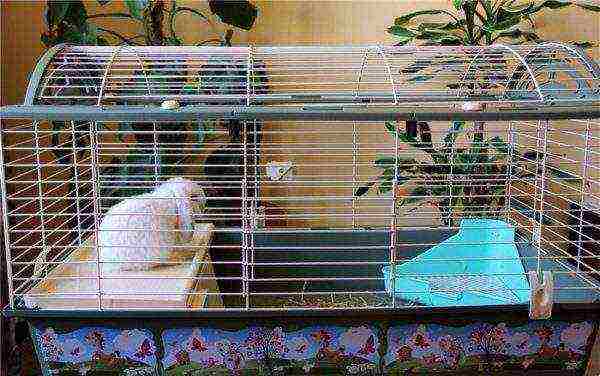
To clean the cage it is undesirable to use household chemicals... Residual detergent can be hazardous to the animal. If the cage is cleaned regularly, it is enough to wash it with warm water. Remove stubborn dirt with table vinegar.
If the rabbit is trained to walk in the litter box, the filler is completely changed twice a week.
- Dirty aviary (cell). To get rid of the smell, cleaning is done daily for 7-10 days, then especially contaminated areas are treated with vinegar and the room is ventilated.
- Uncastrated male... Rabbits, like many other animals, mark their territory, and you cannot wean them from this. Castration will solve the odor problem. In addition, neutered (spayed) rabbits become calmer and friendlier.
- Animal disease... If all the rules for caring for your pet are observed, but an unpleasant odor appears in the cage, this is a reason to contact your veterinarian. Perhaps the eared pet is sick.
How to care for and keep a decorative rabbit in an apartment
- It is very important for the health of the rabbit balanced diet... The animals are fed with grass and hay, cereals, fresh vegetables and complete specialized feeds.
- Rabbits eat up to 30 times a day, feed must always be available. In this case, it is necessary to immediately remove from the cage the remains of the food that has not been eaten, which can deteriorate, so that the pet does not get poisoned.
- Juicy foods (vegetables, fruits, grass) are not suitable for rabbits under 3 months of age... The kids are given hay and compound feed.
- Rabbits happy to eat meadow grasses... Having decided to pamper your pet, you need to check that poisonous plants are not caught in the collected grass. They tear the grass for the animals away from the roads.
- Cereals and legumes pre-soaked or boiled.
- For grinding teeth the animals are offered solid food: young twigs of aspen, apple, willow, birch. Dried pieces of bread will be a healthy treat.
- Mineral supplements (bone meal, chalk) is given to all animals, with the exception of those that receive complete food.
- Rabbits that regularly run around the apartment and get enough physical activity can not be walked. But walks in the fresh air will bring joy to both the owner and the pet... After making sure that there are no dogs, garbage, poisonous plants nearby, the animal is allowed to walk in the park or in a secluded meadow. Even the calmest the rabbit must be on a harness or leash: Frightened by something, the animal may run away, and it will not be easy to catch it on the street.
- Rabbit nails are trimmed every 3 weeks.... With forceps or a claw cutter, the tip of the claw is cut off with a length of 1-2 mm so as not to touch the blood vessels (they are clearly visible in the lumen). If the animal bleeds, the claw is washed with hydrogen peroxide.
- Does the rabbit need to be washed? Veterinarians claim that bathing is very stressful for animals and is contraindicated for a variety of reasons.
- Water treatments interfere with the skin's natural protective lubrication... As a result, the coat becomes dull, falls out, the animal feels itching.
- Bathing often becomes cause of colds.
- Stressexperienced by the animal can become fatal.
- Rabbits take care of the cleanliness of the coat on their own, carefully licking themselves. With proper care no need to wash.
But there are situations when bathing cannot be avoided. For example, if an eared pet is very dirty, overheated or suffers from diarrhea. How can you not harm your pet?
- Wash the rabbit in the sink or a basin is more convenient and easier than in a bath.
- Prepare room temperature water or a few degrees warmer.
- If possible it is better not to wet the animal entirelyand wash only contaminated areas.
- It is better not to use detergents.... If you cannot do without them, purchase a special shampoo for rabbits. It is necessary to rinse the wool very carefully so that later the animal, licking itself, does not get poisoned.
- Water the animal with water safer not from the shower, but from the bucket or mugs.
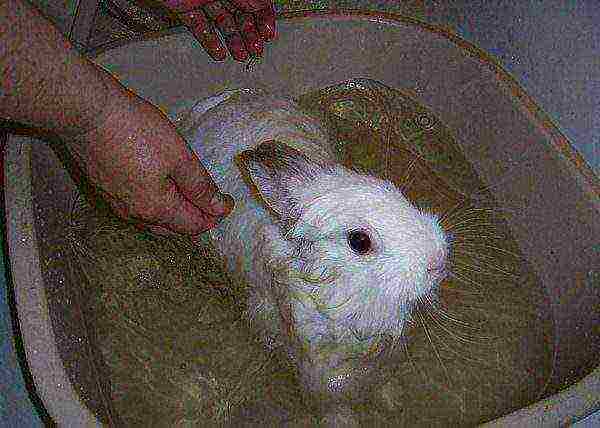
- The head, especially the ears and nose, you can't wet.
- You will need an assistant to hold the rabbit. Scared animal may break free and injure himself.
- Important avoid drafts... All windows and doors must be tightly closed.
- Dry the wool thoroughly with a towel... Until the animal is completely dry, it is undesirable to let it go to the floor, it is better to leave it on the couch or pick it up.
- For drying wool do not use a hairdryer: Noise scares animals, and delicate skin is easy to burn.
Vaccination
Timely vaccinations will help the animals avoid diseases that are difficult to treat in rabbits and often lead to death. Veterinarians recommend first of all to vaccinate pets against myxomatosis and viral hemorrhagic disease (VHD). In some cases, vaccination is indispensable:
- the rabbit will participate in an exhibition;
- planned trip abroad;
- the pet remains for overexposure in zoological hotel
- insurance for a pet.
Myxomatosis. The first vaccination is desirable in the spring. The rabbit is at least one month old. Vaccination is repeated a month later, and then 5-6 months after the initial one. Revaccination is required twice a year, in early spring and autumn, when outbreaks of myxomatosis occur, so that the animal retains strong immunity. The virus is spread by insects, therefore it is most important to protect the rabbit during the period of their high activity.
In Russia, most veterinary clinics use the RABBIVAK-B and Cunivak Myxo vaccines.
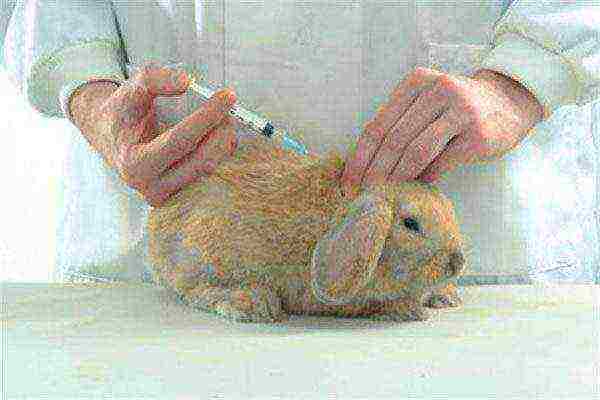
Viral hemorrhagic disease (VHD). The first time rabbits are vaccinated at the age of 6 weeks and older, while the body weight of the animal should be more than 500 g. The second time the vaccine is administered after 3 months. Revaccination is required every six months or once a year, depending on the epizootic situation. The most commonly used vaccines are RABBIVAK-V and Cunivak RHD.
There are also complex vaccines that stimulate the production of antibodies to two diseases at once. A veterinarian should advise on their use in each specific case..
Rabbits are also vaccinated against pasteurellosis, paratyphoid fever, listerllosis and rabies, but these diseases are not so widespread. Vaccination is indicated for animals from nurserieswhere there are many animals and the risk of transmission is higher.
Decorative rabbits are able to give the owner a lot of positive emotions and joyful moments. If properly maintained and looked after, animals live up to 15 years... But, having decided to get an eared friend, do not forget: a cute and funny appearance does not make a rabbit a toy. This is a living creature that needs love, affection and attention.

